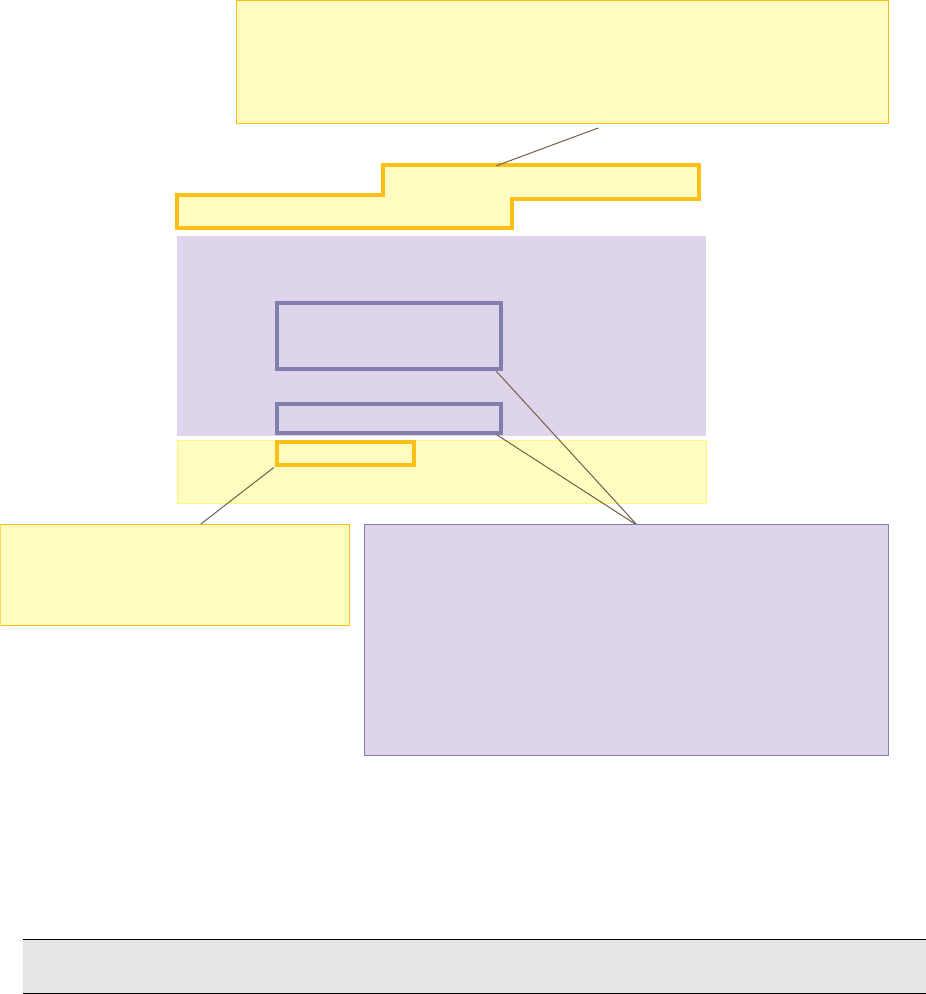User's Manual

Deployment Guide 177
EXAMPLE 4: APPLYING QOS
The QoS policy that you define is shown in Figure 5. Although you did not configure settings for Aerohive QoS
classes 0, 1, 2, 4, and 7, the policy applies default settings to them. The HiveAP assigns all traffic that you do
not specifically map to an Aerohive class to class 2, which uses WRR with a weight of 30 and a default rate of
54,000 or 1,000,000 Kbps. Because nothing is mapped to classes 0, 1, 4, and 7, their settings are irrelevant.
Figure 5 QoS Policy "voice"
2. Create a user profile and apply the QoS policy to it.
user-profile employee-net qos-policy voice attribute 2
You apply the QoS policy "voice" to all users belonging to the user-profile "employee-net" with attribute
2. On the RADIUS server, you must configure attribute 2 as one of the RADIUS attributes that the RADIUS
server returns when authenticating users (see step 5 on page 179).
save config
exit
Note: When HiveAP-1 does not use RADIUS for user authentication, you must assign the user profile to an
SSID. To do that, use the following command: ssid employee default-user-profile-attr 2
The user profile rate defines the total amount of bandwidth for all users to
which this policy applies. The user rate defines the maximum amount for any
single user. The user rate can be equal to but not greater than the user profile
rate. (Note: The maximums shown here are for HiveAPs that support 802.11n
data rates. For other HiveAPs, the maximum rates are 54,000 Kbps.)
show qos policy voice
Policy name=voice; user rate limit=1000000kbps;
User profile rate=1000000kbps; user profile weight=10;
Class=0; mode=wrr; weight=10; limit=1000000kbps;
Class=1; mode=wrr; weight=20; limit=1000000kbps;
Class=2; mode=wrr; weight=30; limit=1000000kbps;
Class=3; mode=wrr; weight=60; limit=1000000kbps;
Class=4; mode=wrr; weight=50; limit=1000000kbps;
Class=5; mode=wrr; weight=90; limit=20000kbps;
Class=6; mode=strict; weight=0; limit=512kbps;
Class=7; mode=strict; weight=0; limit=20000kbps;
The forwarding mode for class 6 (voice)
is strict. The HiveAP forwards packets
belonging to this class immediately
without queuing them.
The forwarding mode for class 5 (streaming media) and 2 - 3
(data) is WRR (weighted round robin). The HiveAP forwards
traffic belonging to these classes by putting them into
forwarding queues. The weights determine how many bits per
second go into each queue. For every 30 bits that the HiveAP
queues for class 2, it queues approximately 60 bits for class 3,
and 90 bits for class 5. These amounts are approximations
because the HiveAP also has an internal set weights for traffic
in different classes that skews forwarding in favor of traffic
belonging to higher classes.










